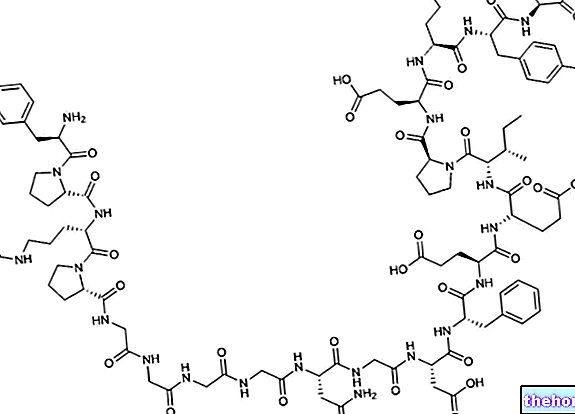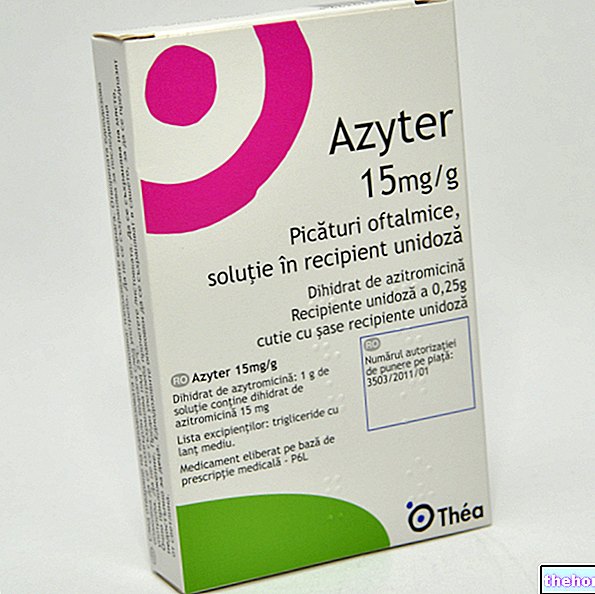DICYNONE ® is a drug based on Ethamsylate.
THERAPEUTIC GROUP: Antihemorrhagics.

Indications DICYNONE ® Etamsilate
DICYNONE ® is used in the prevention and treatment of bleeding during general and specialist surgery.
Ethamylate is also effective in the therapeutic treatment of vascular frailty states.
Mechanism of action DICYNONE ® Etamsilate
Etamsilate, taken orally through DICYNONE ® is effectively absorbed in the intestine and readily distributed throughout the body, over 90% bound to plasma proteins.
Maximum plasma concentrations are obtained approximately 4 hours after oral administration. The active principle therefore persists in the bloodstream for about 8 hours, at the end of which it is eliminated, in unchanged form, mainly through the urine.
The anti-haemorrhagic action of etamsilate is guaranteed by the direct effect on platelet adhesiveness, which is decidedly enhanced, by platelet activation and by the increased expression of adhesion molecules induced by the active principle. This mechanism of action allows a significant reduction in the time and volume of bleeding, without increasing the risk of thrombosis.
Studies carried out and clinical efficacy
ETHAMSYLATE AND PREMATURE MORTALITY
Cochrane Database Syst Rev. 2010 Jan 20;: CD004343.
Ethamsylate for the prevention of morbidity and mortality in preterm or very low birth weight infants.
Hunt R, Hey E.
Several researchers have hypothesized that the anti-haemorrhagic effects of etamsilate could reduce the incidence of intraventricular haemorrhages, very frequent in premature infants, improving their prognosis and clinical course. Despite numerous experiments, etamsilate does not appear to significantly affect the reduction of mortality in these small patients.
2. REDUCED EFFECTIVENESS OF ETHAMSYLATE IN THE TREATMENT OF MENORRAGIA
BMJ. 1996 Sep 7; 313: 579-82.
Treatment of menorrhagia during menstruation: randomized controlled trial of ethamsylate, mefenamic acid, and tranexamic acid.
Bonnar J, Sheppard BL.
The administration of etamsilate in patients with menorrhagia did not produce the expected results, proving to be ineffective in reducing the amount and duration of bleeding. This modest action is the basis of the reduced use of this drug in obstetrics.
3. MOLECULAR MECHANISM OF ETHAMSYLATE
Thromb Res. 2002 Sep 15; 107: 329-35.
The hemostatic agent ethamsylate enhances P-selectin membrane expression in human platelets and cultured endothelial cells.
Alvarez-Guerra M, Hernandez MR, Escolar G, Chiavaroli C, Garay RP, Hannaert P
This study, conducted on cell cultures, made it possible to clarify the molecular mechanism through which etamsylate acts. More precisely, this active principle appears to be able to pre-activate platelets, increasing the expression of P-selectins and other molecules. of adhesion responsible for platelet adhesiveness and the anti-haemorrhagic effect.
Method of use and dosage
DICYNONE ® 250 mg etamsylate tablets or 250 mg ampoules for injections: in the prophylaxis of intraoperative haemorrhagic events, the recommended dosage of etamsilate is 1.5 g / day (equal to 6 tablets) for the 3 days prior to surgery and 2 ampoules within one hour of surgery.
In the post-operative phase, the therapy must be prolonged with 1 - 1.5 gr / day of etamsilate for the same number of days.
The intake of DICYNONE ®, the relative dosage and the timing of intake, must be evaluated by your doctor taking into account the physio-pathological condition of the adult.
The preventive scheme in children is naturally subject to important variations, which are of exclusive specialist relevance.
IN ANY CASE, BEFORE TAKING DICYNONE ® Etamsilate - YOU MUST BE PRESCRIBED AND CHECKED BY YOUR DOCTOR.
Warnings DICYNONE ® Etamsilate
Given the important renal secretion of etamsilate, DICYNONE ® should be taken with particular caution in all patients with impaired renal function.
The correct timing of administration, both in the pre-operative and post-operative period, is very important in the prevention of bleeding events associated with surgery.
The presence in sodium sulphite tablets and monosodium sulphite ampoules could cause severe asthma attacks and allergic reactions in sensitive or asthmatic patients.
In these cases and in the presence of fever, erythema and skin rash, DICYNONE ® should be discontinued immediately.
PREGNANCY AND BREASTFEEDING
The absence of studies relating to the pharmacokinetics of etamsilate in pregnancy does not allow to establish the safety profile of DICYNONE ® therefore it is not recommended to take this drug during the entire period of pregnancy and lactation.
Interactions
There are currently no known interactions with other active ingredients that could compromise the patient's health.
An increased anti-haemorrhagic effect could occur following the concomitant administration of other drugs with anti-haemorrhagic activity.
Contraindications DICYNONE ® Etamsilate
DICYNONE ® is contraindicated in case of hypersensitivity to one of its components, and in case of severe renal insufficiency.
Undesirable Effects - Side Effects
The presence of sulphites in DICYNONE ® could be associated with allergic reactions with anaphylactic symptoms.
However, DICYNONE ® seems well tolerated, with modest side reactions such as fever, headache, skin rash, nausea, vomiting and diarrhea, which tend to regress once the therapy is stopped.
Note
DICYNONE ® can only be sold under medical prescription.
The information on DICYNONE ® Etamsilato published on this page may be out of date or incomplete. For a correct use of this information, see the Disclaimer and useful information page.




























